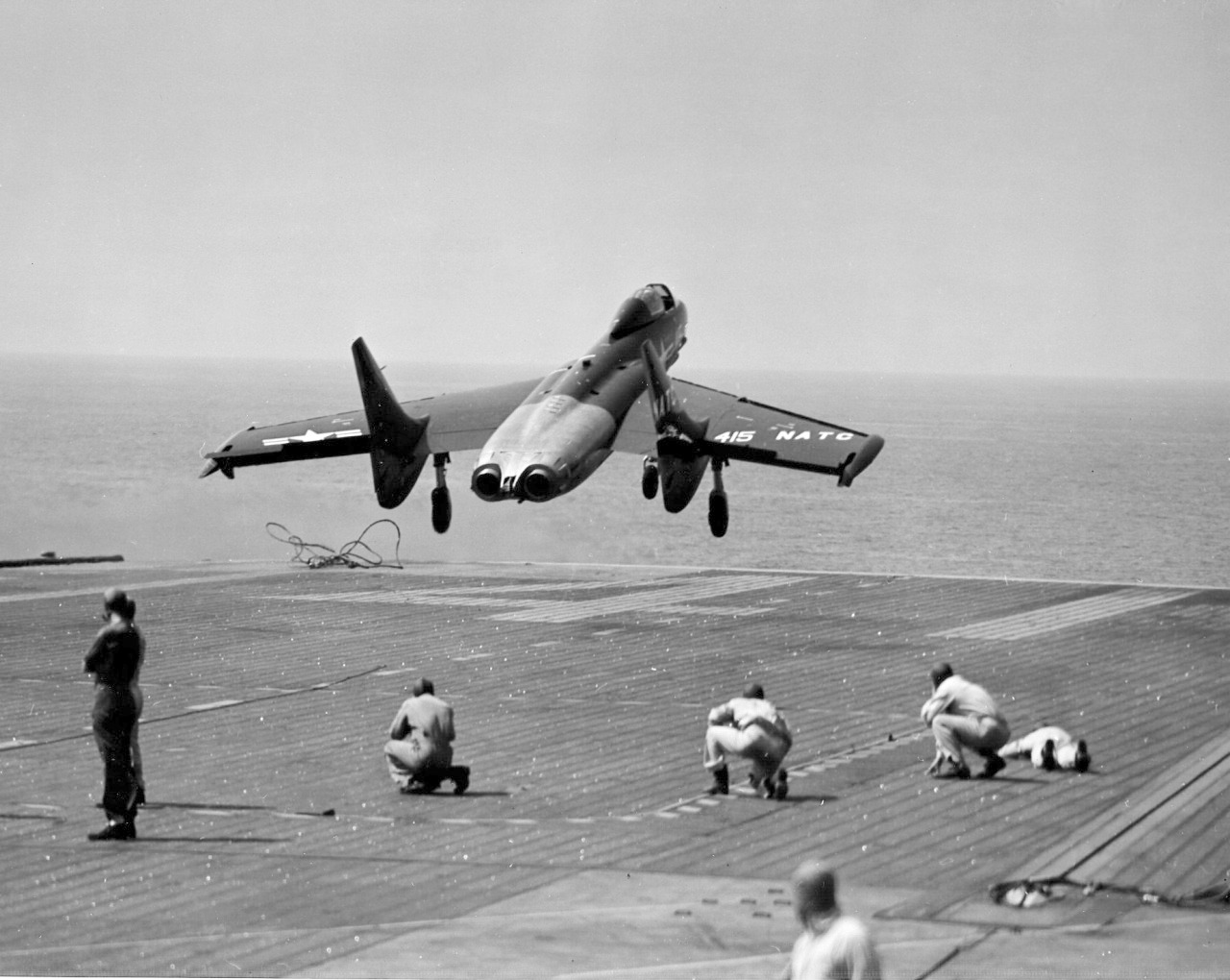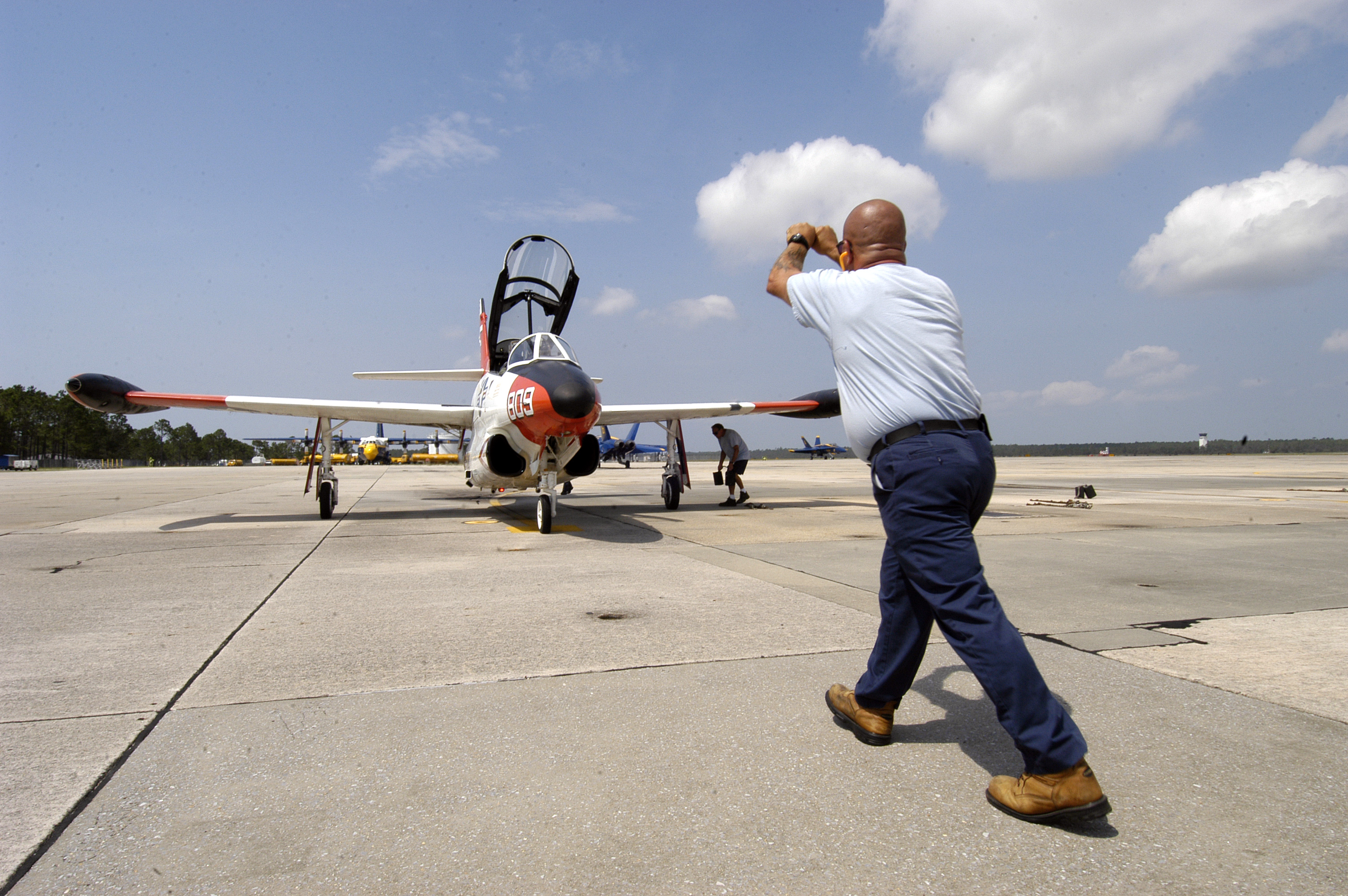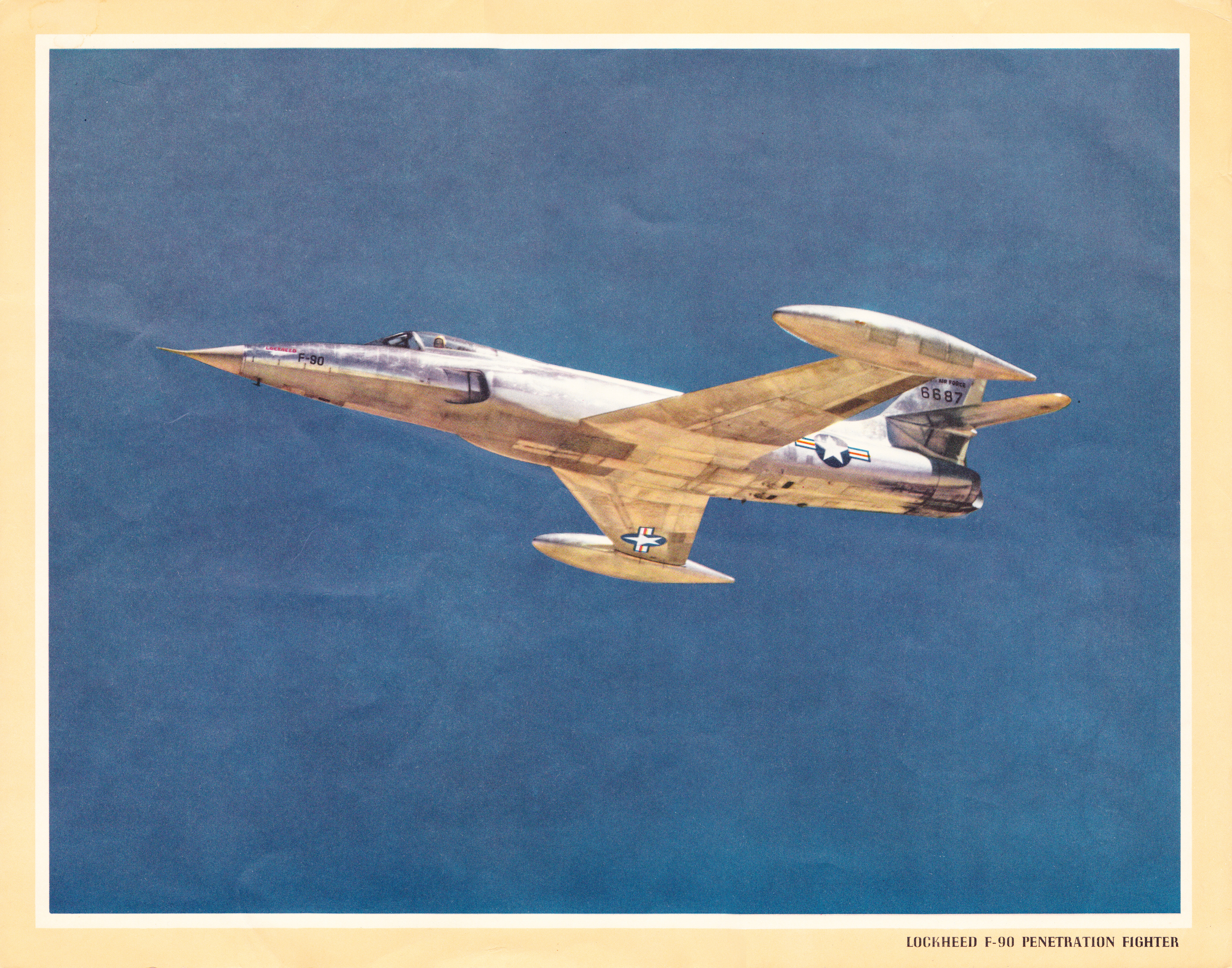|
Westinghouse J34
The Westinghouse J34, company designation Westinghouse 24C, was a turbojet engine developed by Westinghouse Aviation Gas Turbine Division in the late 1940s. Essentially an enlarged version of the earlier Westinghouse J30, the J34 produced 3,000 pounds of thrust, twice as much as the J30. Later models produced as much as 4,900 lb with the addition of an afterburner. It first flew in 1947. The J46 engine was developed as a larger, more powerful version of Westinghouse's J34 engine, about 50% larger. Development Built in an era of rapidly advancing gas turbine engine technology, the J34 was largely obsolete before it saw service, and often served as an interim engine. For instance, the Douglas X-3 Stiletto was equipped with two J34 engines when the intended Westinghouse J46 engine proved to be unsuitable. The Stiletto was developed to investigate the design of an aircraft at sustained supersonic speeds. However, equipped with the J34 instead of its intended engines, it was ... [...More Info...] [...Related Items...] OR: [Wikipedia] [Google] [Baidu] |
Wright-Patterson Air Force Base
Wright-Patterson Air Force Base (WPAFB) is a United States Air Force base and census-designated place just east of Dayton, Ohio, in Greene and Montgomery counties. It includes both Wright and Patterson Fields, which were originally Wilbur Wright Field and Fairfield Aviation General Supply Depot. Patterson Field is approximately northeast of Dayton; Wright Field is approximately northeast of Dayton. The host unit at Wright-Patterson AFB is the 88th Air Base Wing (88 ABW), assigned to the Air Force Life Cycle Management Center and Air Force Materiel Command. The 88 ABW operates the airfield, maintains all infrastructure and provides security, communications, medical, legal, personnel, contracting, finance, transportation, air traffic control, weather forecasting, public affairs, recreation and chaplain services for more than 60 associate units. The base's origins begin with the establishment of Wilbur Wright Field on 22 May and McCook Field in November 1917, both establis ... [...More Info...] [...Related Items...] OR: [Wikipedia] [Google] [Baidu] |
Curtiss-Wright XF-87 Blackhawk
The Curtiss-Wright XF-87 Blackhawk (previously designated the XP-87) was a prototype American all-weather jet fighter-interceptor, and the company's last aircraft project. Designed as a replacement for the World War II–era propeller-driven P-61 Black Widow night/interceptor aircraft, the XF-87 lost in government procurement competition to the Northrop F-89 Scorpion. The loss of the contract was fatal to the company; the Curtiss-Wright Corporation closed down its aviation division, selling its assets to North American Aviation. Design and development The aircraft started life as a project for an attack aircraft, designated XA-43. When the United States Army Air Forces issued a requirement for a jet-powered all-weather fighter in 1945, the design was reworked for that request. The XP-87 was a large mid-wing aircraft with four engines paired in underwing pods, with a mid-mounted tailplane and tricycle undercarriage. Two crew members (pilot and radar operator) sat side by side ... [...More Info...] [...Related Items...] OR: [Wikipedia] [Google] [Baidu] |
Shockwave (Jet Truck)
Shockwave was a family of jet-powered American trucks, including Shockwave, a 1984 Peterbilt Peterbilt Motors Company is an American truck manufacturer. Established in 1939 from the acquisition of Fageol Truck and Motor Company, Peterbilt specializes in the production of heavy-duty ( Class 8) and medium-duty (Classes 5–7) commercia ... 359 truck tractor, and Super Shockwave, a 1957 Chevy truck. Shockwave Shockwave was the first of the Shockwave trucks. It currently holds the world record for jet-powered full-sized trucks at . The truck had three Westinghouse J34-48 jet engines, with a total output of , which allowed the truck to complete the quarter-mile in 6.63 seconds. Shockwave was driven by Chris Darnell, who used the truck to compete against planes going in a rolling drag race at airshows, often winning. It consumed fuel at a rate equal to 400 gallons per mile, even more when the afterburners were activated. To slow the truck down at the end of a race it need ... [...More Info...] [...Related Items...] OR: [Wikipedia] [Google] [Baidu] |
Vought F7U Cutlass
The Vought F7U Cutlass is a United States Navy carrier-based jet fighter and fighter-bomber of the early Cold War era. It was a tailless aircraft for which aerodynamic data from projects of the German Arado and Messerschmitt companies, obtained at the end of World War II through German scientists who worked on the projects, contributed, though Vought designers denied any link to the German research at the time.Angelucci 1987, p. 447. The F7U was the last aircraft designed by Rex Beisel, who was responsible for the first fighter ever designed specifically for the U.S. Navy, the Curtiss TS-1 of 1922. Regarded as a radical departure from traditional aircraft design, the Cutlass suffered from numerous technical and handling problems throughout its short service career. The type was responsible for the deaths of four test pilots and 21 other U.S. Navy pilots. Over one quarter of all Cutlasses built were destroyed in accidents. Design and development The Cutlass was Vought's ent ... [...More Info...] [...Related Items...] OR: [Wikipedia] [Google] [Baidu] |
Vought F6U Pirate
The Vought F6U Pirate was the Vought company's first jet fighter, designed for the United States Navy during the mid-1940s. Although pioneering the use of turbojet power as the first naval fighter with an afterburner and composite material construction, the aircraft proved to be underpowered and was judged unsuitable for combat. None were ever issued to operational squadrons and they were relegated to development, training, and test roles before they were withdrawn from service in 1950. Design and development A specification was issued by the Navy's Bureau of Aeronautics (BuAer) for a single-seat, carrier-based fighter powered by a Westinghouse 24C (later J34) axial turbojet on 5 September 1944. Chance Vought was awarded a contract for three V-340 (company designation) prototypes on 29 December 1944. The XF6U was a small aircraft with tricycle undercarriage and with straight wings and tail surfaces. The wings were short enough that they did not need to fold. To fit more aircra ... [...More Info...] [...Related Items...] OR: [Wikipedia] [Google] [Baidu] |
Ryan FR Fireball
The Ryan FR Fireball was an American mixed-power (piston and jet-powered) fighter aircraft designed by Ryan Aeronautical for the United States Navy during World War II. It was the Navy's first aircraft with a jet engine. Only 66 aircraft were built before Japan surrendered in August 1945. The FR-1 Fireball equipped a single squadron before the war's end, but did not see combat. The aircraft ultimately proved to lack the structural strength required for operations aboard aircraft carriers and was withdrawn in mid-1947. Design and development Design of the FR-1 began in 1943 to a proposal instigated by Admiral John S. McCain Sr. for a mixed-powered fighter because early jet engines had sluggish acceleration that was considered unsafe and unsuitable for carrier operations. Ryan received a contract for three XFR-1 prototypes and one static test airframe on 11 February 1943 with the first two prototypes delivered in 14 months. Another contract was placed for 100 aircraft on 2 ... [...More Info...] [...Related Items...] OR: [Wikipedia] [Google] [Baidu] |
North American T-2 Buckeye
The North American T-2 Buckeye was the United States Navy's intermediate training aircraft, intended to introduce U.S. Navy and U.S. Marine Corps student naval aviators and student naval flight officers to jets. It entered service in 1959, beginning the replacement process of the Lockheed T2V SeaStar, and was itself replaced by the McDonnell Douglas T-45 Goshawk in 2008. Design and development In 1956, the US Navy issued a requirement for a jet-powered basic trainer to replace its T-28 piston-engined aircraft. (Primary training for the US Navy remained the responsibility of the piston-engined Beechcraft T-34 Mentor while the jet-powered Lockheed T2V SeaStar provided more advanced training). North American Aviation won the US Navy's competition for the new training aircraft in mid-1956 with its NA-241 design.''Air International'' October 1973, pp. 163–164. North American's design, designated the T2J-1 by the US Navy, was a mid-winged monoplane with trainee and instructor sitti ... [...More Info...] [...Related Items...] OR: [Wikipedia] [Google] [Baidu] |
McDonnell XF-88 Voodoo
The McDonnell XF-88 Voodoo was a long-range, twinjet fighter aircraft with swept wings designed for the United States Air Force. Although it never entered production, its design was adapted for the subsequent supersonic F-101 Voodoo. Design and development The XF-88 originated from a 1946 United States Army Air Forces requirement for a long-range "penetration fighter" to escort bombers to their targets. It was to be essentially a jet-powered replacement for the wartime North American P-51 Mustang that had escorted Boeing B-17 Flying Fortress bombers over Germany. It was to have a combat radius of 900 mi (1,450 km) and high performance. McDonnell began work on the aircraft, dubbed Model 36, on 1 April 1946. On 20 June the company was given a contract for two prototypes designated XP-88.Dorr 1995, p. 170. Dave Lewis was Chief of Aerodynamics on this project. The initial design was intended to have straight wings and a V-shaped tail, but wind tunnel tests indicated ... [...More Info...] [...Related Items...] OR: [Wikipedia] [Google] [Baidu] |
McDonnell XF-85 Goblin
The McDonnell XF-85 Goblin is an American prototype fighter aircraft conceived during World War II by McDonnell Aircraft. It was intended to deploy from the bomb bay of the giant Convair B-36 bomber as a parasite fighter. The XF-85's intended role was to defend bombers from hostile interceptor aircraft, a need demonstrated during World War II. McDonnell built two prototypes before the Air Force (USAAF) terminated the program. The XF-85 was a response to a USAAF requirement for a fighter to be carried within the Northrop XB-35 and B-36, then under development. This was to address the limited range of existing interceptor aircraft compared to the greater range of new bomber designs. The XF-85 was a diminutive jet aircraft featuring a distinctive egg-shaped fuselage and a forked-tail stabilizer design. The prototypes were built and underwent testing and evaluation in 1948. Flight tests showed promise in the design, but the aircraft's performance was inferior to the jet fighters ... [...More Info...] [...Related Items...] OR: [Wikipedia] [Google] [Baidu] |
McDonnell F2H Banshee
The McDonnell F2H Banshee (company designation McDonnell Model 24) is an American single-seat carrier-based jet fighter aircraft deployed by the United States Navy and United States Marine Corps from 1948 to 1961. A development of the FH Phantom, it was one of the primary American fighters used during the Korean War, and was the only jet-powered fighter deployed by the Royal Canadian Navy.Mesko, 2002, p.48 The aircraft's name is derived from the banshee of Irish mythology. Design and development The Banshee was a development of the FH Phantom, and planning started before the Phantom entered production. McDonnell engineers intended the aircraft to be a modified Phantom that shared many parts with the earlier aircraft, but it soon became clear that the need for heavier armament, greater internal fuel capacity, and other improvements would make the idea infeasible.Mesko, 2002, p.10 The new aircraft would use much larger and more powerful engines, a pair of newly developed We ... [...More Info...] [...Related Items...] OR: [Wikipedia] [Google] [Baidu] |
McDonnell 119
The McDonnell 119/220 is a business jet developed and unsuccessfully marketed by McDonnell Aircraft in the late 1950s and early 1960s. Its configuration is unique for this type of aircraft, with four podded engines underneath a low wing. It is the only airplane built by McDonnell Aircraft to be marketed to civil buyers prior to the company's merger with Douglas Aircraft to form McDonnell Douglas. The jet could be outfitted for 10 passengers in a luxury executive configuration and could carry as many as 29. Design and development The Model 119 was designed in 1957 for the U.S. Air Force's UCX (Utility-Cargo Experimental) contract announced in August 1956, competing with the Lockheed JetStar. McDonnell entered the UCX competition with an eye on commercial sales; the company had never produced a civil aircraft. Designed for a range at airspeed against a headwind, the 119 had a wing sweep of 35 degrees and a vertical stabilizer sweep of 45 degrees. Critical field length on ... [...More Info...] [...Related Items...] OR: [Wikipedia] [Google] [Baidu] |
Lockheed XF-90
The Lockheed XF-90 was built in response to a United States Air Force requirement for a long-range penetration fighter and bomber escort. The same requirement produced the McDonnell XF-88 Voodoo. Lockheed received a contract for two prototype XP-90s (redesignated XF-90 in 1948). The design was developed by Willis Hawkins and the Skunk Works team under Kelly Johnson. Two prototypes were built ( s/n ''46-687'' and ''-688''). Developmental and political difficulties delayed the first flight until 3 June 1949, with Chief Test Pilot Tony LeVier at the controls. Embodying the experience gained in developing the P-80 Shooting Star, the XF-90 shared some design traits with the older Lockheed fighter, albeit with swept-wings; however, this latter design choice could not sufficiently make up for the project’s underpowered engines,Jones 1975, p. 241. and the XF-90 never entered production. Design and development In response to a 1945 Army request for an advanced jet fighter, Lockhee ... [...More Info...] [...Related Items...] OR: [Wikipedia] [Google] [Baidu] |





%2C_in_May_1945_(USN_1053774).jpg)





